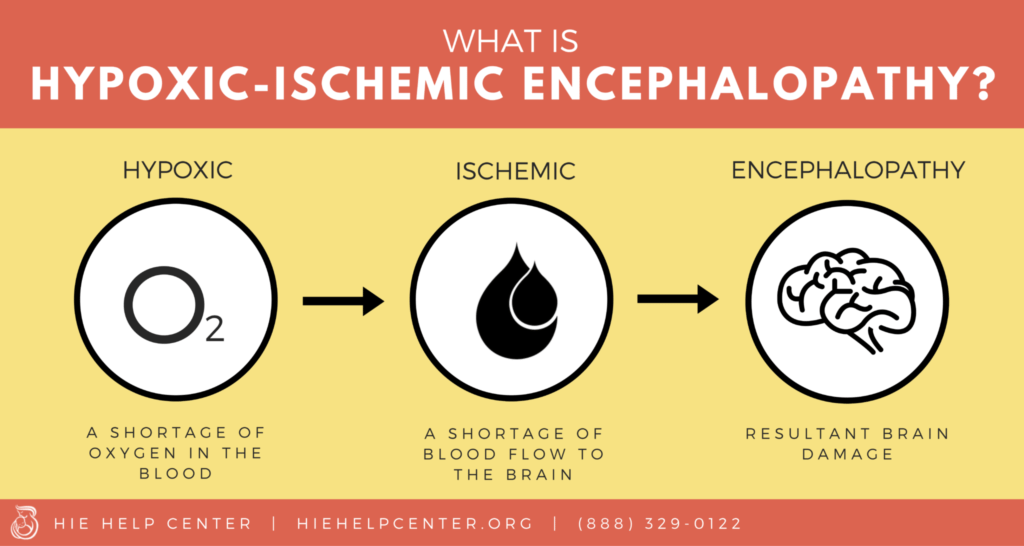Hypoxic ischemic encephalopathy (HIE) is a type of disorder that occurs when a baby’s brain does not get enough oxygen and blood flow. Also known as birth asphyxia, perinatal asphyxia, oxygen deprivation at birth, and lack of oxygen to the brain, HIE can occur during pregnancy, labor and delivery, or immediately following birth.
Causes of Hypoxic Ischemic Encephalopathy
The most common causes of HIE during pregnancy include:
- Maternal drug and alcohol abuse
- Maternal diabetes
- Preeclampsia
- Impaired blood flow to the placenta
- Heart and lung disease or malformations
- Severe infections or anemia in the developing fetus
During labor and delivery, the baby can be deprived of oxygen due to:
- Umbilical cord problems (cord wrapped around the neck)
- Placental problems (rupture or detachment)
- Excessive bleeding
- Breech positioning of the baby
- Prolonged and difficult labor
- Maternal low blood pressure
After delivery, asphyxia can occur in:
- Severely premature babies
- Babies with serious infections
- Babies with trauma to the brain or skull
- Babies with lung or heart disease
- Babies with very low blood pressure
Symptoms and Diagnosis of Birth Asphyxia
A neurologist relies on the Apgar score to diagnose birth asphyxia or hypoxic ischemic encephalopathy. The Apgar score has a value between 0 and 10 which is calculated based on the color of the baby’s skin, reflexes, muscle tone, heart rate, and breathing. A low Apgar score between 0 and 3 for 5 minutes or more is a sign of oxygen deprivation to the baby’s brain. Symptoms of HIE include
- Bluish skin coloration
- Low heart rate
- Poor muscle tone and reflexes
- Weak breathing
- Meconium (first stool) staining of the amniotic fluid
- Seizures
Treatment for Hypoxic Ischemic Encephalopathy
Babies who were deprived of oxygen at birth may be left with physical and mental impairments. The treatments and therapies for HIE are similar to other neuromuscular conditions such as cerebral palsy, intellectual or development disabilities, learning disabilities, emotional or behavioral disorders, and speech and language disorders.
In the neonatal period (immediately following birth), it is critical that hypoxic ischemic encephalopathy is recognized and treated aggressively to limit the damage from the lack of oxygen. The physical damage of HIE can be reduced by hypothermia therapy, also known as cooling treatment or brain cooling. Other treatments may consist of mechanical ventilation, hyperbaric oxygen, seizure medications, and blood pressure medications.
The global burden of HIE is evident from the statistics – nearly 300,000 babies die each year from neonatal encephalopathy and approximately 250,000 survive but are left with moderate to severe neuromuscular and developmental impairments.
The statistics do not reveal the real tragedy of hypoxic ischemic encephalopathy, though. Parents of babies who are deprived of oxygen at birth are left wondering if their baby will ever be “normal.” The outcome of HIE varies from baby to baby depending on the severity and duration of the oxygen deprivation, but very often the prognosis is “wait and see.” Babies who suffer from hypoxic ischemic encephalopathy may require lifelong care and therapy and have additional special needs. The true severity of brain asphyxia becomes apparent only when the child reaches 3 or 4 years of age. The consequences of moderate and severe HIE are well understood, but research is now showing that, unfortunately, even mild oxygen deprivation at birth can cause long-term health problems.




